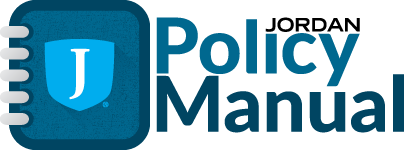Effective: 6/28/1977
Revision: 9/25/2012
- Board Policy
An employee who is temporarily unable to complete the essential functions of his/her job due an injury or disease compensable under Utah Code Annotated Title 34A, referring to workers' compensation and occupational diseases, should be allowed a reasonable medical leave without pay. In addition, the injured employee may use previously accumulated sick pay in an amount which when aggregated with workers' compensation benefits does not exceed the regular rate of pay received prior to the injury. The District is self-insured with an outside insurance company administering the District's industrial insurance plan. The District Administration is responsible to develop guidelines for implementing this policy.
- Administration Policy
The Administration shall administer this policy in accordance with the following guidelines:
Guidelines
- Reporting injuries
- All on-the-job employee injuries shall be immediately reported to the supervisor. The supervisor or designee shall contact the Third Party Administrator to report the claim and complete all necessary paperwork provided by the Human Resources Department.
- The Third Party Administrator of the industrial insurance plan shall forward the Employee's Statement Regarding Accident report form to the injured employee and supply copies to Insurance Services and Human Resources Departments.
- Compensation
- An employee who cannot work because of injuries suffered in an incident covered by workers' compensation will draw on accumulated paid sick leave in an amount which when aggregated with workers' compensation benefits does not exceed the regular rate of pay prior to the injury. Refer to policies DP324 NEG Sick Leave – Licensed and DP326 NEG Sick Leave – Education Support Professionals
- The first three days' absence will be charged against the injured employee's accumulated sick leave. Thereafter, one-third day of accumulated sick leave will be charged for each day's absence and two-thirds day charged to industrial.
- If an injured employee is disabled for 14 calendar days or more, the industrial insurance will pay the employee two-thirds of a day's pay for each day off retroactive to the first day's absence.
- If an eligible employee has no leave days available, he/she may apply for sick bank days.
- An employee who is off work due to physical assault on the job, as defined by Utah Code Ann.
§ 76-5-102, shall have no loss of sick leave for up to 180 calendar days, including summer months. Any payments received from industrial insurance shall be deducted from the employee's regular pay.
- Workers Compensation runs concurrent with Family Medical Leave Act (FMLA) and available paid leave, if applicable.
- Returning to work
- An employee returning to work after a workplace injury shall present to the Human Resources Department a physician's certificate stipulating that the employee is capable of returning to full duty and performing the essential functions of the job.
- An employee off work due to a workplace injury for longer than thirty (30) working days may be temporarily replaced by the Board. When an employee is released by his/her physician as fully able to perform all essential job functions with or without reasonable accommodation, the employee will be returned to his/her original position.
- A Transitional Work Assignment may be available through the Human Resources Department, to employees who are recovering from a work-related injury who have been released to return to work and have temporary medical restrictions. Eligibility for a Transitional Work Assignment is determined on a case-by-case basis, accounting for the employee’s position, the employee’s temporary work restrictions, and the ability of the school/department to accommodate the temporary work restrictions. A Transitional Assignment is a temporary assignment and does not represent a permanent change of duties or responsibilities. In the event that an employee declines a Transitional Work Assignment offer, the employee will remain on unpaid status until he/she obtains a full work release from the treating health care provider.
